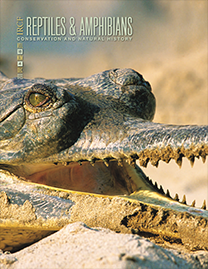Ontogenetic Behavioral Shifts in Habitat Utilization of Treefrogs (Hylidae) in North-central Florida
DOI:
https://doi.org/10.17161/randa.v18i4.16188Abstract
Natural history data through all stages of an animal’s life cycle are necessary for making sound management decisions, which are especially critical in Florida, where developmental pressure often comes at the cost of species and their habitats. Despite being locally abundant, relatively little was known about ontogenetic behavioral shifts in habitat utilization for many hylid treefrogs. In this study, we used polyvinyl chloride (PVC) pipes to survey treefrogs in the localized, but habitat- and species-diverse University of Florida Natural Areas Teaching Lab (NATL) in north-central Florida. A variety of habitat variables were tested over multiple trapping seasons. We found that treefrog species were primarily limited by the presence of some water source or moisture, although some species were more tolerant of drier conditions than others. Ontogenetic shifts in habitat exploitation were detected only in limited instances, with juvenile Green Treefrogs (Hyla cinerea) demonstrating a narrower niche than adults, and juvenile Squirrel Treefrogs (Hyla squirella) being most commonly captured during winter and spring. The non-native Cuban Treefrog (Osteopilus septentrionalis) ranked third in species detection, and its distribution was highly limited by both season and habitat type. With much to be learned about amphibian biology and natural history, efforts should be made to continue local studies such as this to enable conscious management and conservation decisions.
Downloads
Published
Issue
Section
License

This work is licensed under a Creative Commons Attribution-NonCommercial 4.0 International License.
Copyright is held by the authors. Articles in R&A are made available under a Creative Commons Attribution-NonCommercial 4.0 International license.

